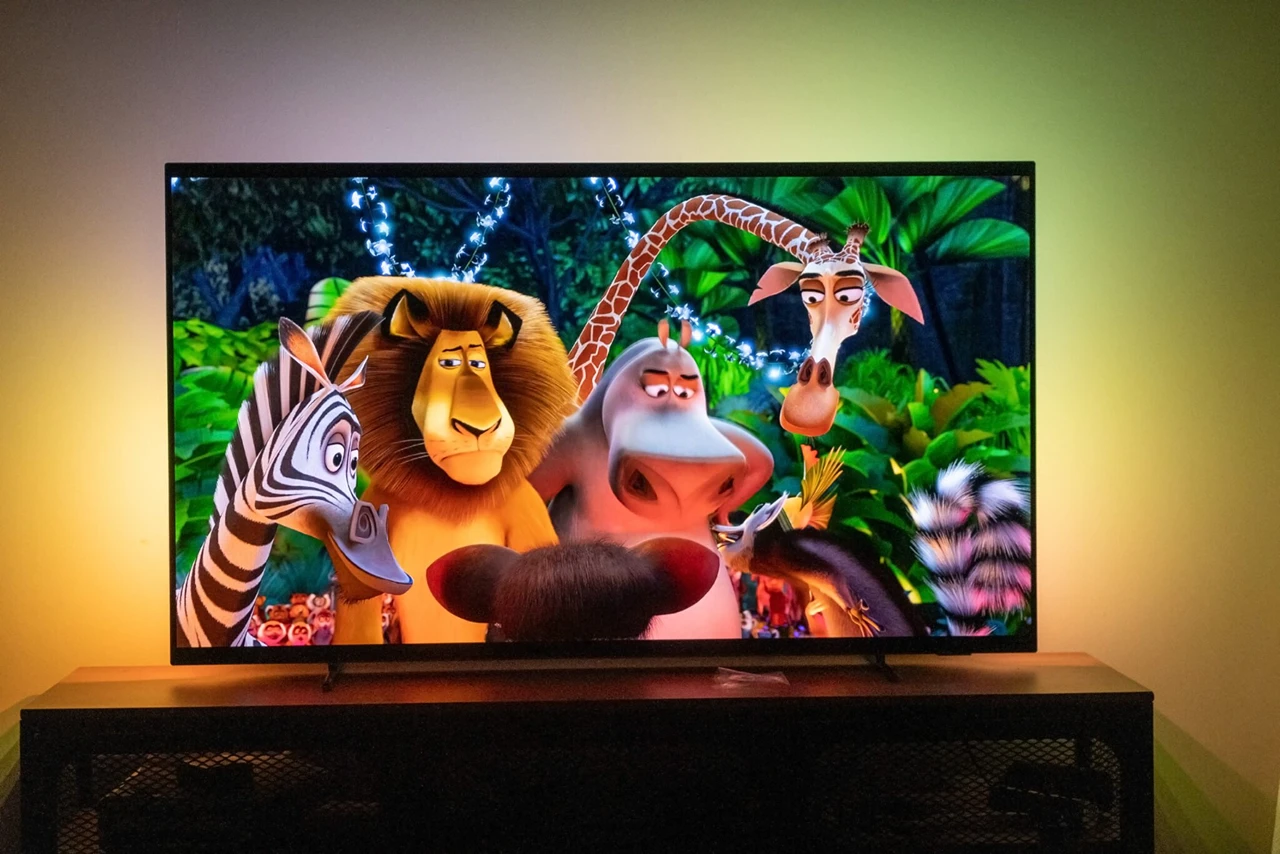Philips OLED707 Review
- Image quality
- Sound quality
- Fabrication, construction and connections
- Operating system
- Pilot and operation
Philips OLED707 review in three sentences
Philips OLED707 is a well-priced and well-made TV. It has a very good picture, sound and design. The perfect culmination is, of course, Ambilight, which is more interesting than I originally expected.
A TV that feels bigger than it actually is? Here is a review of Philips OLED707, an Ambilight screen that optically enlarges the picture. Philips has been making televisions for a long time, but in they have been slightly overshadowed by other companies. Is it right? Is this Philips TV good? Is Ambilight really useful? You will learn all of this and more in this review.
Benefits
- Sound quality
- Image quality
- Great working Ambilight
- Smooth and fast operation of the operating system
- Elegant design
Disadvantages
- Average pilot
- No possibility to hide cables
- Average location of connectors
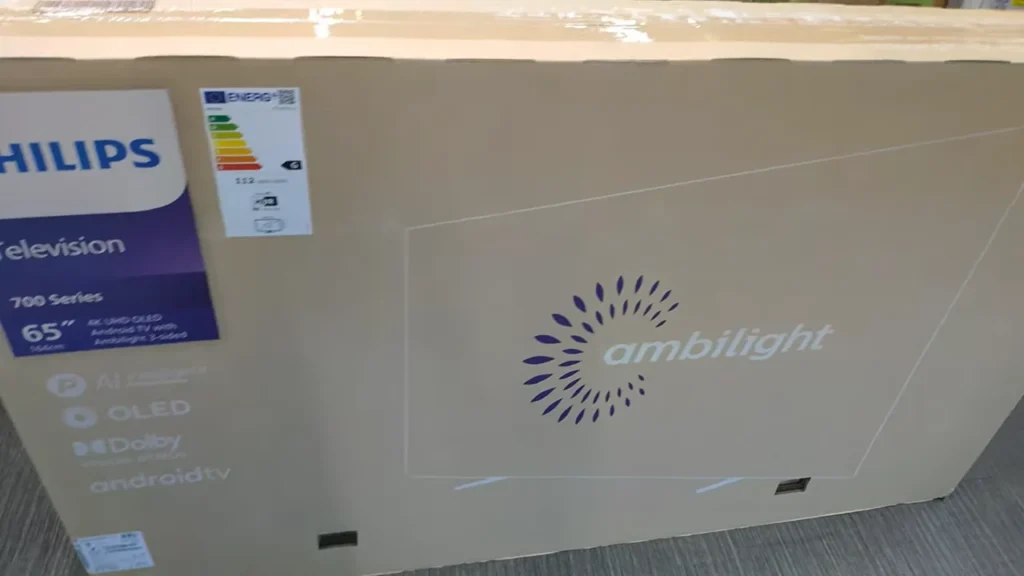
Contents
Set and price
Philips OLED707 comes to us in a relatively small box. There are no facilities here for removing the TV, so you have to deal with it classically, from the top. With a very thin OLED matrix, it is quite dangerous. The TV itself from the outside is packed well. Only the elements that allow you to hold the TV by the sides of the screen without the risk of getting it dirty are missing. It is a pity, because it is quite an important issue. In addition to the TV itself, in the box we find a power cable, remote control, paperwork and a piece of paper with a ruler that allows us to place the Philips OLED707 at the right distance from the wall.
The price of the Philips OLED707 is obviously as follows from the price, because the TV is available in three sizes.
Philips 48OLED707 costs £999.00 approximately USD 1,199
Philips 55OLED707 costs £1,299.00 approximately USD 1,449
Philips 65OLED707 costs £1,399.00 approximately USD 1,569
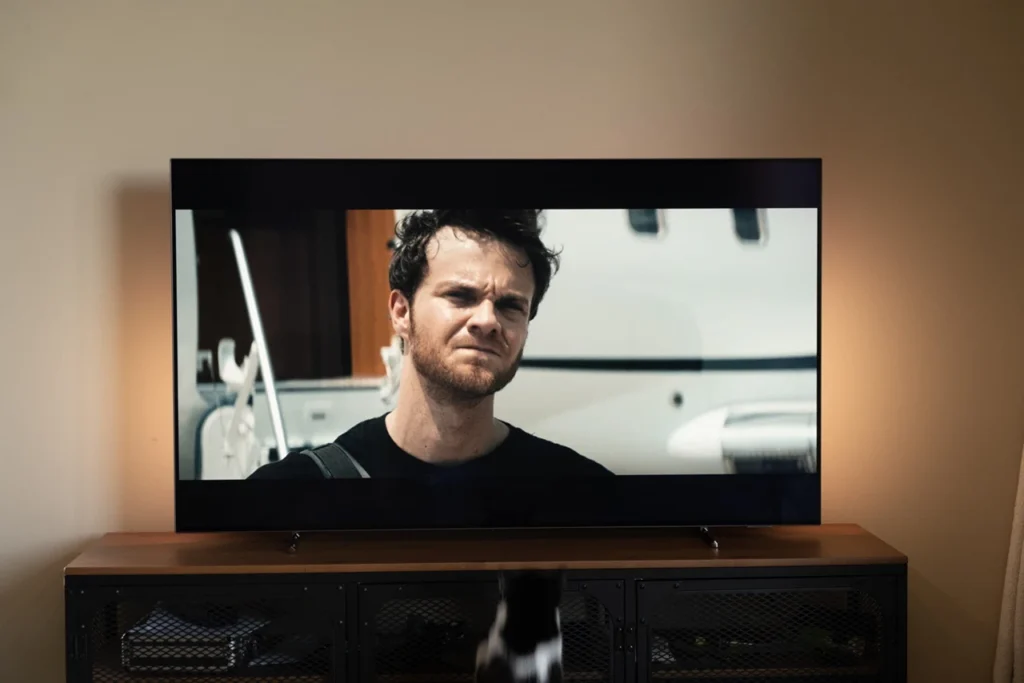
Specification
- OLED matrix
- Resolution 3840 by 2160 pixels
- Refresh 120 Hz
- 2.1 system speakers with a power of 70 W
- HDR10 +, HLG, Dolby Vision support
- Ambilight three-sided
- 4x HDMI, 3x USB
- Android TV
Build quality and build
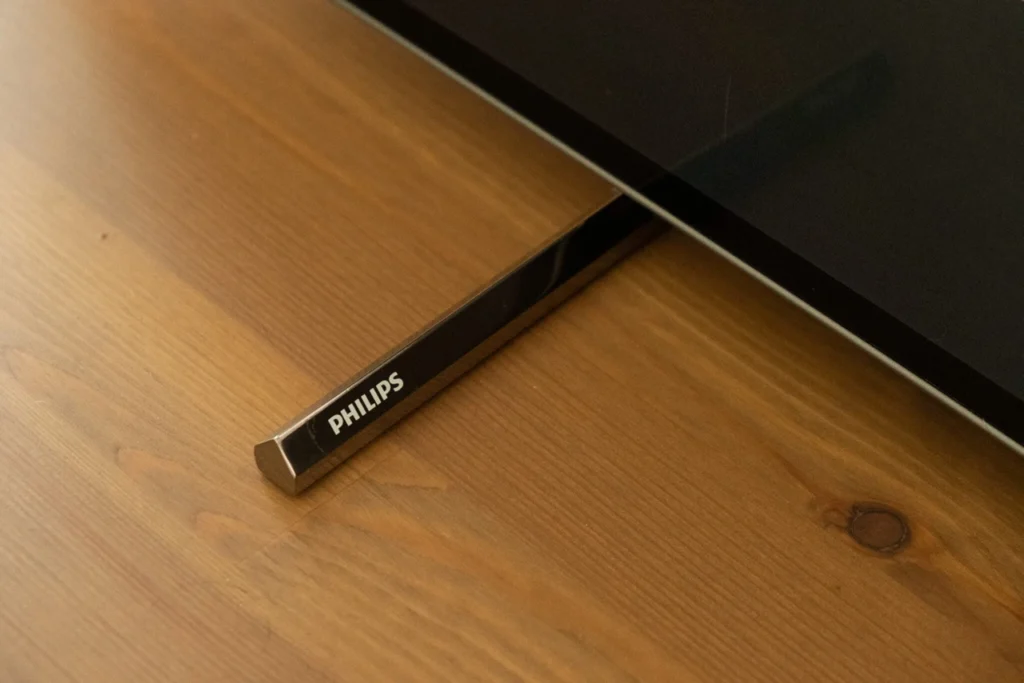
The Philips OLED707 is a very well made TV and one of the more elegant looking ones I have seen. I owe a lot of this to two very small legs that fit perfectly into modern interiors. They are made of metal and polished to a shine. Importantly, the set also includes spacer bolts . Thanks to them, we can fit a soundbar under the TV, although still something like Sonos Beam from Sonos Sub Mini than Samsung HW-Q990B . The TV has very small frames on each side, also at the bottom. The logo is only on one of the stands, and the IR receiver is under the bottom edge but to the right. It is usually in the center, which may interfere with soundbars.
The rear of the TV is quite standard for an OLED. The lower part is thicker and the upper part is incredibly thin again. In this case, the bottom, where the electronics is located, is slightly larger than it was in, for example, last year’s LG OLED C1 . This is because the Ambilight LEDs have to be placed slightly higher.
It should be remembered that according to the information provided, the TV set must be moved 10-20 centimeters from the wall for the lighting to work optimally. This is especially important when you want to hang the TV, although in this regard, I would prefer to choose a higher model, which has Ambilight four-sided. This will give you a better experience that doesn’t make much difference when standing on a cupboard.
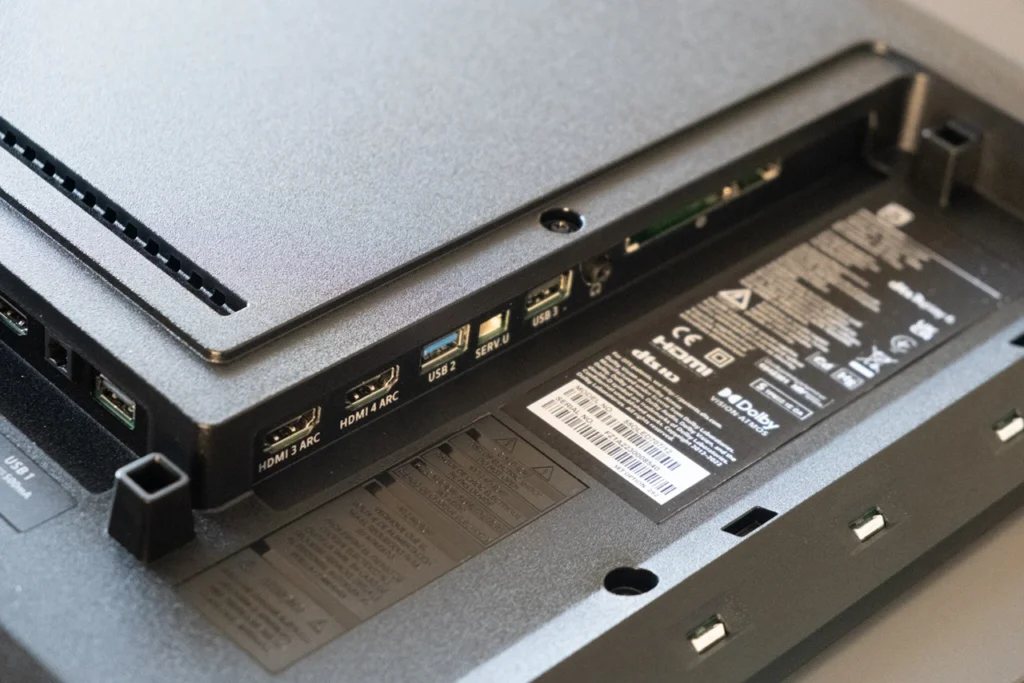
The connectors, seen from the front, are on the left side of the TV. Some of them are placed on the side and some are facing downwards. The second group includes HDMI with eARC, so it’s worth connecting them even before setting up the TV. The downside is the lack of cable guides. You can see them under the Philips OLED707 TV, especially when watching TV lying down. In the middle of the rear part of the housing we find a subwoofer that looks good and actually helps in movies.
A remote that is very specific
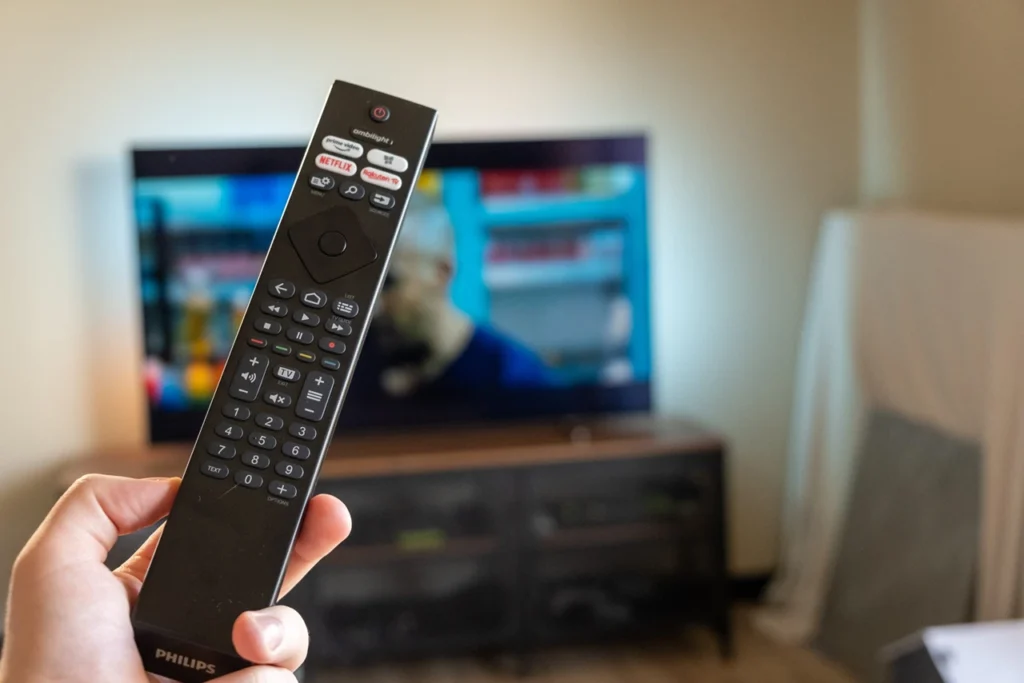
The Philips OLED707 comes with a remote that looks great at first glance. Modern, with aggressive cuts, interesting layout of the keys. Everything is ruined when we pick it up. Due to the sharp angles and large width, it is simply inconvenient. Maybe with very large hands and very long fingers the feelings are a bit better, but you shouldn’t be overly positive. The buttons have a very short and hard travel, but the enter button in my case is a bit loose and sounds tragic .
Don’t get the premium feel that should already be on this budget. At the top, there are four buttons for streaming applications, and of those that will most likely interest us, we will find a shortcut to Prime Video and Netflix. Personally, I would prefer Disney + to Netflix, which I have not used even once since the premiere of the sixth season of Peaky Blinders, but probably many people still use the option chosen by the manufacturer more often.
Android TV with unusual settings
The Philips OLED707 that this review is about comes equipped with the Android TV operating system which works surprisingly well. Televisions like TCL C735 have already got me used to slow operation. This time is definitely different. The whole thing works really fast, the first setup took me 10 minutes, and I didn’t wait another hour for the application to update . I am very impressed.
Another element I didn’t expect is the settings. They look much different than the standard ones, and their operation is relatively simple. The only annoying thing about it is the fact that we go backward by clicking left and not with the undo button which closes the window completely.
However, the options available are very extensive. It is very important to be able to set the black level, which allows us to practically eliminate the black crush effect without looking for an excessive number of settings, which makes the whole situation much easier . The TV also offers us a large amount of AI settings, although I personally preferred to abandon them in favor of the default Filmmaker settings for each mode. They provide colors that are closest to an established pattern.
Image quality
The reviewed Philips OLED707, as the name suggests, is equipped with a matrix in OLED technology, with a resolution of 3840 by 2160 pixels and refreshing 120 Hz. With the Filmmaker settings and increased black levels, the image obtained is at a great, very high level.
The deltaE error is small, because the average for the reviewed model is around 2.1 with a maximum error of 2.9. Gamma is close to 2.2 which is the target result. The grayscale deltaE looks a bit worse, because it amounts to an average of 3.4, which in this case means a slight greening of the image . Philips, however, is very easy to improve in this regard, which is due to the convenient and fast image settings.
In high-budget films, the hero of the review, i.e. Philips OLED707, works perfectly. The colors are very natural, the movement is incredibly well reproduced, and the contrast when changing the black level looks wonderful. The TV also covers almost 97% of the DCI-P3 space , which gives us a very large amount of colors. The matrix, in turn, is 10-bit, which is already a standard solution in this budget. The TV is also doing well for budget series, although animated films were my favorite image.
It was also with them that Ambilight made the greatest impression, to which I will come back a bit later. In animated films, such as the Magadaskar shown in the pictures, the TV showed great, pleasantly saturated colors that were still natural. Thanks to very good algorithms, the image is also perfectly processed, which provides a perfect feeling even when only watching materials in SDR. In the case of HDR movies, my feelings are even better, especially in the case of Dolby Vision, where I recommend increasing the black level even more. The materials are often quite dark recorded, which can boost the effects of black crush.
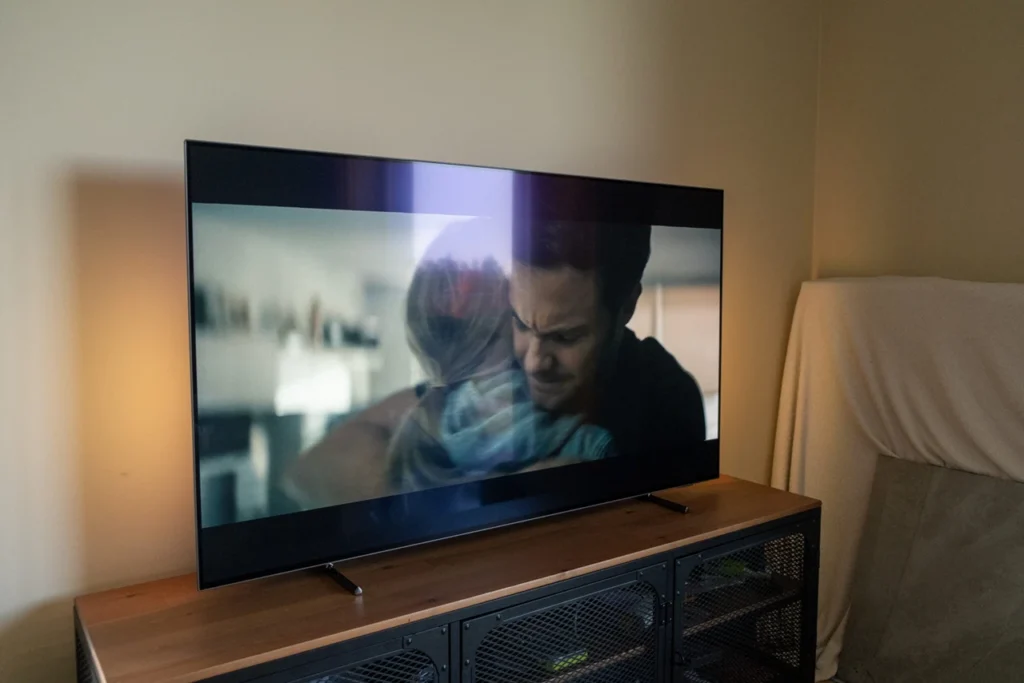
Despite this, the TV can handle both bright and shaded parts of the picture very well. With a good base gamma and infinite contrast, details are nowhere to be found. Even if one part of the freeze frame has clouds and the other has a dark interior. We will see as many details as the camera used by the operator was able to register. This gives the impression of a very natural image.
The brightness of the image is at a decent level, as there are no very high thresholds yet. The possibilities of this year’s model do not differ much from the last year’s version, i.e. OLED706, which was also a very interesting proposition. In this case, 670 nits were measured for HDR materials and 560 nits for the SDR signal . This allows you to watch reasonably during the day, but you should not focus on full picture legibility when the sun is shining directly on the TV. If we need higher brightness, I would look towards the Hisense U8HQ TV , which is much brighter thanks to the MiniLED-based design.
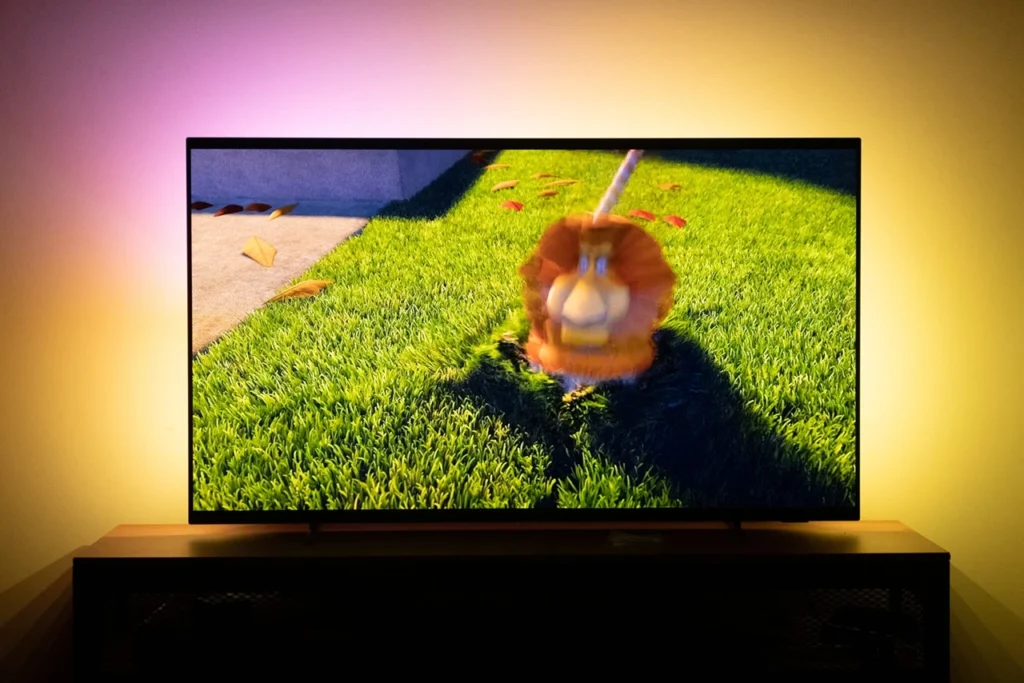
As already mentioned, the mapping of the movement is very natural. It even seems a bit too natural. I had a similar, but less pleasant feeling after watching The Hobbit in the cinema, in 48 frames, for which cinemas were not adapted at the time. We are now more used to more frames, and the Philips OLED707 is doing well not only with movies in 24 frames, and sports in 60, as well as in 120 for games. The image always looks good, it is not over-sharpened, so there is no image jumping effect, but also no objects blur.
Ambilight, a pleasant solution
Ambilight is a manufacturer’s technology that provides visual enlargement of the image thanks to RGB LEDs located on the back of the TV. It can adjust visual effects to the video, to music, or just shine. Their brightness is also regulated, and it can also happen automatically. The reviewed Philips OLED707 is equipped with a three-sided Ambilight, which means it is located on the sides and top of the back of the TV. The manufacturer recommends a distance from the wall between 10 and 20 centimeters. In my case, it was about fifteen centimeters, which is half the scale.
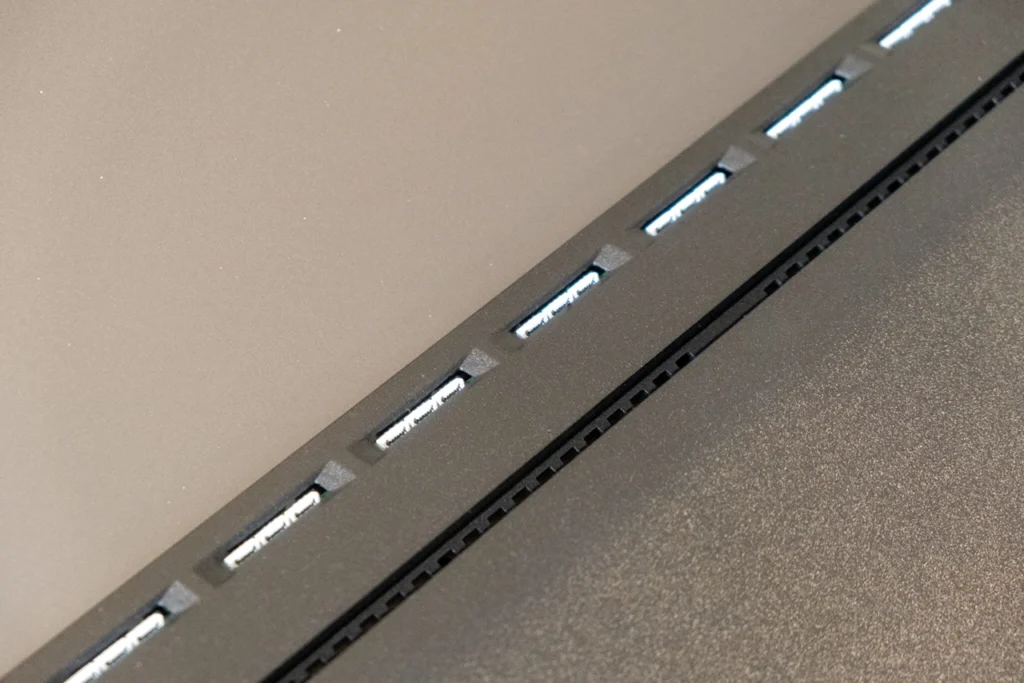
The effects achieved with the Ambilight option were very good. Of course, at night, during the day, we are not able to obtain sufficient brightness to fully see the advantages of this solution. The TV takes the colors close to the edge and releases them further with the help of LEDs. This happens without any visible delay. And in dark conditions, these colors are incredibly saturated, but not always accurate, as you can also see in the photos below. If the Philips OLED707 didn’t quite know what it was supposed to do, it just glowed yellow or orange.
Is Ambilight necessary for me? In no case. Is it a pleasant effect? Of course. When watching in the dark, this is one of the coolest effects that the manufacturer can add to the TV. Thanks to the additional lighting, in my case there was much more immersion and less eye strain at high brightness. It also just looks very nice when listening to music, allowing you to keep a nice mood. So only advantages, no disadvantages. At least I don’t see any.
Sound
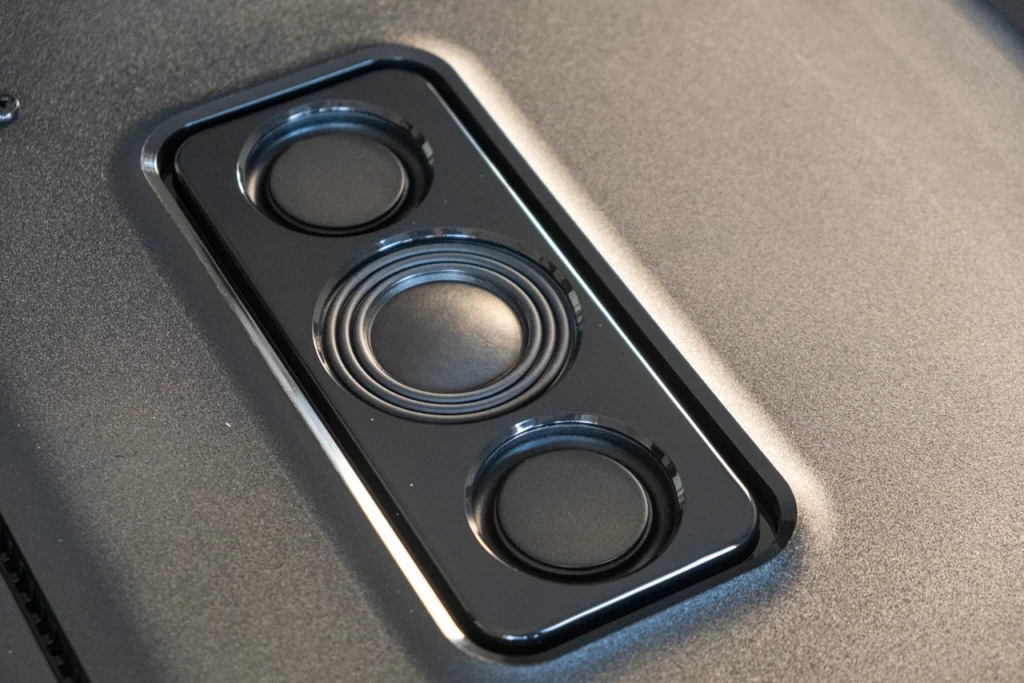
The 2.1 system with a total power of 70 watts in the reviewed Philips OLED707 TV works in a very good style. Two 20-watt speakers and a 30-watt subwoofer do not seem like a powerful system. However, my expectations were a bit too low there together, because the TV set pleasantly surprised me , mainly with its dynamics and a pleasant, natural timbre. It provided a similar feel to the previously mentioned Hisense U8HQ , although with a slightly fuller midrange, which is where most of the dialogue is. Of course, it’s still not ideal for listening to music, but again I don’t see the point in jumping to inexpensive soundbars without a subwoofer.
Philips OLED707 review – summary
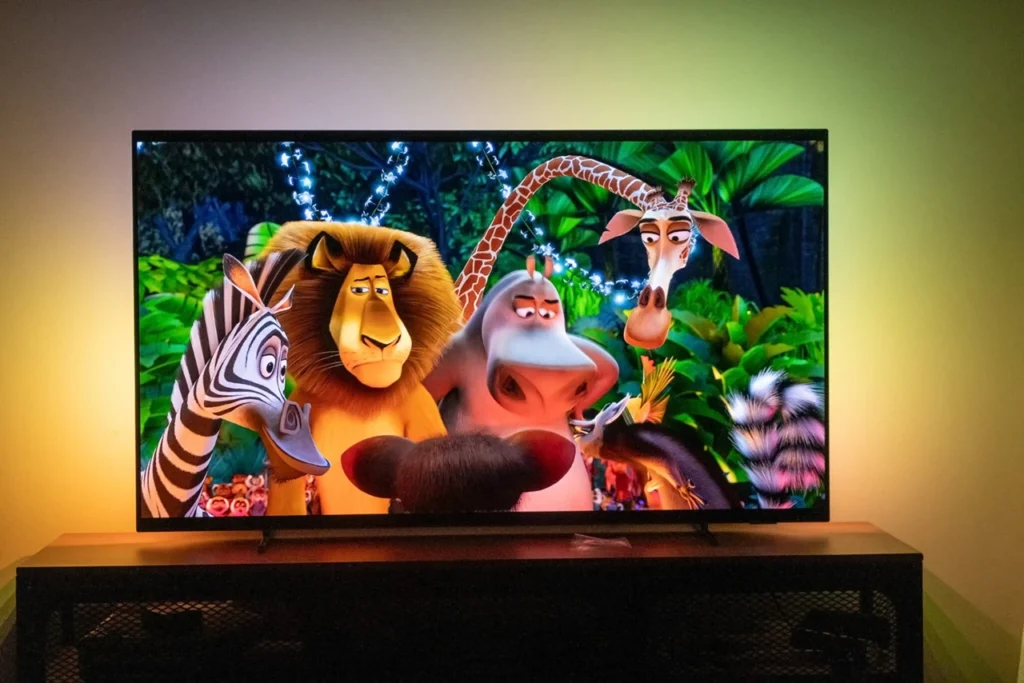
Philips OLED707 is a very versatile TV, and at the same time very well priced. It is a relatively inexpensive OLED with good sound, a very good operating system that works without stuttering, and has Ambilight, which, even if it is only three-sided, still produces nice results. For less advanced users, a few clicks are enough to set everything up for themselves, and more advanced users have access to most of the options they need right away. Without digging through a ton of energy-saving options or another menu. Everything is well sorted, easily accessible and simply legible.
Let’s not forget about the elegant, simple design, which is the icing on the cake next to the other elements of the TV. I rate the fully reviewed Philips OLED707 very positively. It is a screen worth the money.

